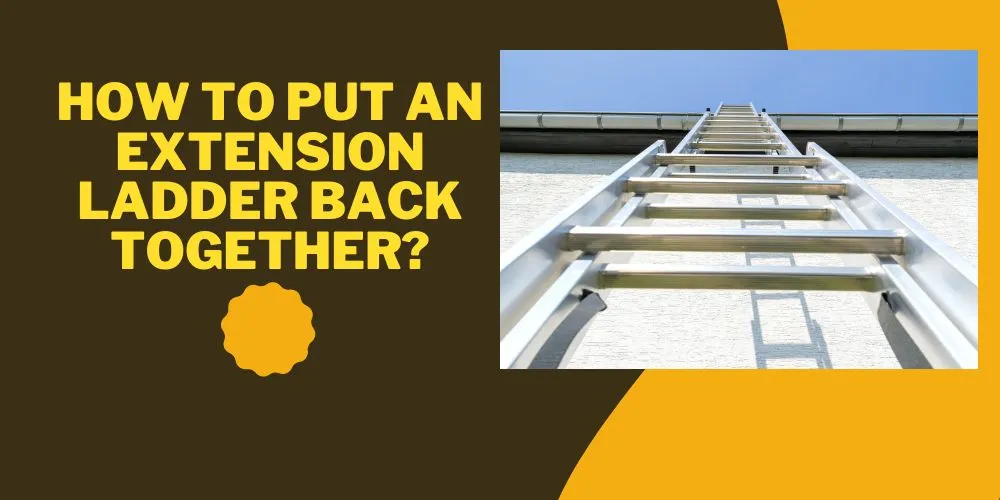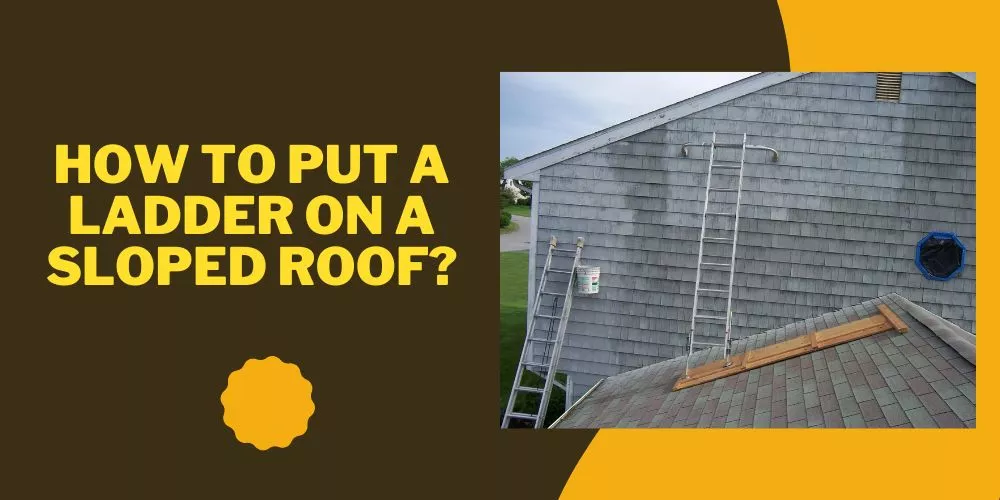Introducing a step-by-step guide on how to secure a ladder to a flagpole, an essential skill for maintaining, repairing, or replacing flags and hardware on flagpoles.
Ensuring the ladder’s stability and safety is paramount when working at heights, and this article will provide valuable insights and practical tips for properly securing the ladder to the flagpole.
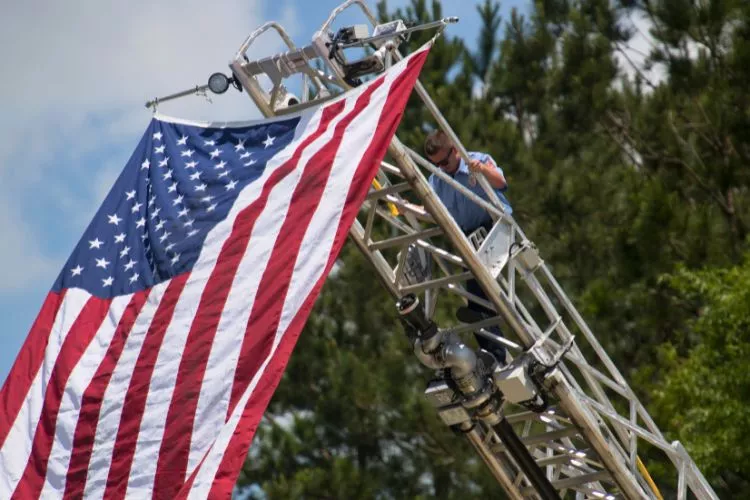
Whether you’re a professional or a DIY enthusiast, this guide will equip you with the knowledge and techniques needed to perform this task confidently and safely, minimizing the risk of accidents and ensuring a successful outcome.
How to secure a ladder to a flagpole?
Securing a ladder to a flagpole is essential for safely performing maintenance, repairs, or replacing flags. Follow this step-by-step guide to ensure your ladder is safely and securely attached to the flagpole, minimizing the risk of accidents and ensuring a successful outcome.
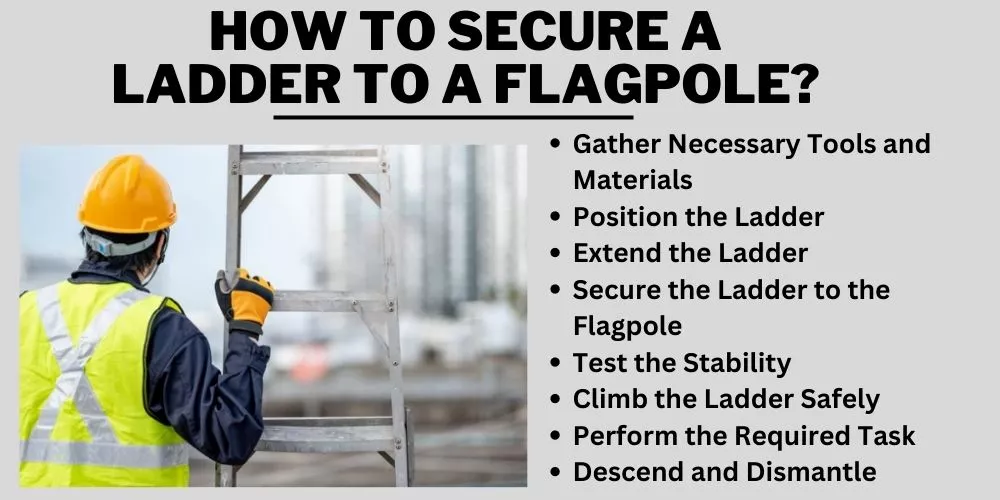
🪜 Gather Necessary Tools and Materials
Before you begin, make sure you have the following tools and materials on hand:
- A sturdy, extendable ladder (preferably with non-slip feet)
- Rope or bungee cords (long enough to wrap around both the ladder and flagpole)
- Work gloves
- Safety harness (optional, but recommended for added safety)
🪜 Position the Ladder
Place the ladder on a level, stable surface, ensuring it is at the appropriate angle. The ladder’s feet should be approximately one-quarter of the ladder’s working length away from the flagpole. For example, if the ladder is 16 feet long, the feet should be about 4 feet away from the flagpole.
🪜 Extend the Ladder
Extend the ladder to the desired height, reaching a few feet above the flagpole’s attachment point. This will provide you with a stable platform to work from and allow you to safely secure the ladder to the flagpole.
🪜 Secure the Ladder to the Flagpole
With the ladder in position, use the rope or bungee cords to securely attach the ladder to the flagpole. Wrap the rope or cords around both the flagpole and the ladder’s rungs, creating a tight, secure connection.
Tie a strong knot, such as a bowline or a double half-hitch, to keep the rope or cords in place.
🪜 Test the Stability
Before climbing the ladder, gently shake it to test its stability. Ensure that the ladder is firmly anchored to the flagpole and that there is no excessive movement or wobbling. Adjust the ladder’s position or tighten the rope or cords to improve stability if necessary.
🪜 Climb the Ladder Safely
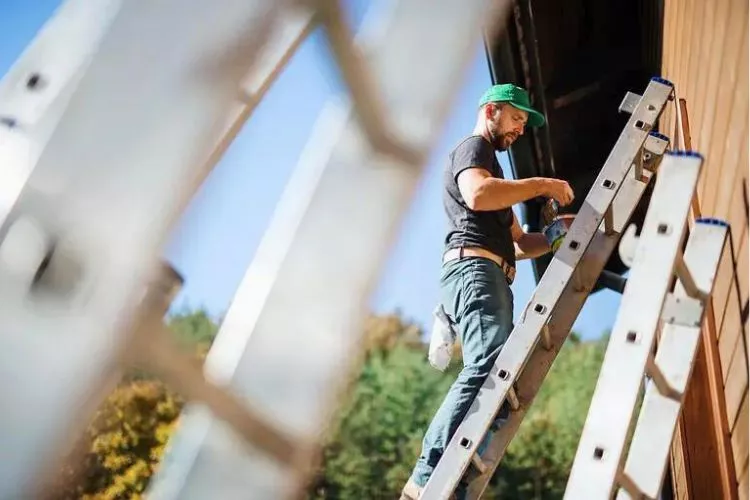
When confident that the ladder is securely attached to the flagpole, put on your work gloves and safety harness (if using). Climb the ladder slowly and carefully, maintaining three points of contact with the ladder at all times (e.g., two hands and one foot or two feet and one hand).
🪜 Perform the Required Task
Once you have safely reached the desired height on the ladder, you can perform the necessary maintenance, repairs, or flag replacement. Remember to work carefully and maintain your balance while on the ladder.
🪜 Descend and Dismantle
After completing the task, carefully descend the ladder, maintaining three points of contact. Once you are back on the ground, untie the rope or cords and remove the ladder from the flagpole.
What is the best method of securing a ladder?
The best way to secure a ladder depends on the specific situation and the type of ladder used. However, some general practices and guidelines can be applied to most situations to ensure maximum safety and stability.
Here is a detailed breakdown of the best method on how to secure a ladder to a flagpole:
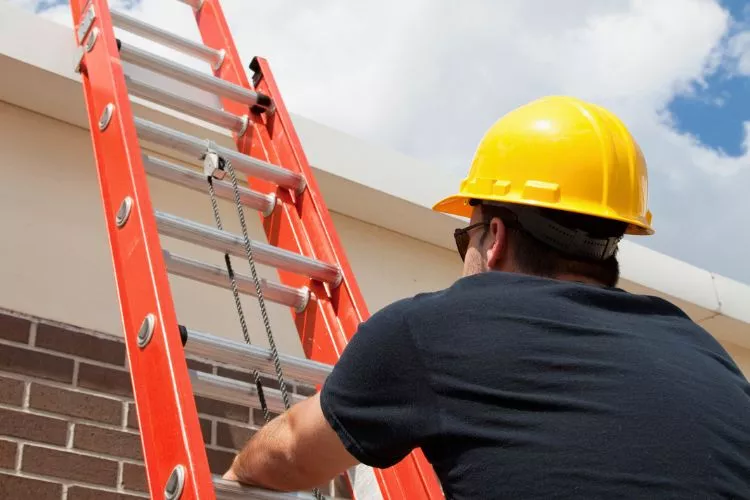
- Choose the right ladder for the task: Select a ladder that is appropriate for the job, considering factors such as height, weight capacity, and material (e.g., fiberglass for electrical work). Ensure the ladder is in good condition, with no visible damage or defects.
- Inspect the ladder: Before using the ladder, inspect it for any signs of damage, wear, or defects. Check the rungs, side rails, and feet for any issues that could compromise the ladder’s stability or safety.
- Set up the ladder on a stable, level surface: Place it on a firm, even surface to prevent it from wobbling or tipping over. Avoid setting up the ladder on soft or uneven ground, as this can lead to instability.
- Position the ladder at the correct angle: The ladder should be positioned at a 75-degree angle to the ground, or a 4:1 ratio (for every four feet of ladder height, the base should be one foot away from the supporting structure). This angle provides optimal stability and reduces the risk of the ladder slipping from underneath you.
- Secure the ladder at the top and bottom: If possible, secure the top of the ladder to the supporting structure using a rope, strap, or other suitable anchoring device. This will prevent the ladder from slipping sideways or falling away from the structure. Additionally, secure the bottom of the ladder using ladder stabilizers, anti-slip feet, or having someone hold the ladder while you work.
- Use a ladder with safety features: Choose one with safety features such as non-slip feet, rung locks, and side rail extensions extending above the top support point. These features can help improve the ladder’s stability and reduce the risk of accidents.
- Maintain three points of contact while climbing: When using the ladder, always maintain three points of contact (e.g., two hands and one foot or two feet and one hand) to ensure stability and balance. Avoid overreaching or leaning too far to one side, as this can cause the ladder to become unstable.
- Use a safety harness when working at heights: If you are working at significant heights or in a situation where a fall could result in severe injury, consider using a safety harness and a secure anchor point to provide extra protection.
Types of Flagpole Ladders
Flagpole ladders are essential tools for safely performing maintenance, repairs, or replacing flags on flagpoles. Various types of ladders are designed specifically for flagpole use, each with unique features and benefits.
This article will discuss four types of flagpole ladders: Monowheel Ladder, Wedge-Style Ladder, Semi-Angle Ladder, and Fixed-Angle Ladder.
🪜 Monowheel Ladder
The Monowheel Ladder is a unique type of ladder designed specifically for flagpole maintenance. It features a single wheel at the top of the ladder, which allows it to easily roll around the flagpole as you work.
This design provides greater mobility and flexibility when working on the flagpole, as you can smoothly move the ladder along the pole’s circumference without having to reposition it manually.
The Monowheel Ladder typically has non-slip rungs and feet, ensuring a secure grip and stable footing while working at heights. The ladder can also be secured to the flagpole using ropes or straps, further enhancing its stability and safety.
🪜 Wedge-Style Ladder
The Wedge-Style Ladder is another type of flagpole ladder with a wedge-shaped design at the top, allowing it to fit snugly against the flagpole. This design provides excellent stability and reduces the risk of the ladder slipping or moving while you work.
Wedge-Style Ladders usually have non-slip rungs and feet to ensure a secure grip and stable footing. Ropes or straps can also be secured to the flagpole for added safety. The wedge design makes it easy to position the ladder at the correct angle, ensuring optimal stability and reducing the risk of accidents.
🪜 Semi-Angle Ladder
The Semi-Angle Ladder is a versatile ladder that can be used for various tasks, including flagpole maintenance. This type of ladder features a semi-angular design, allowing it to be positioned at a shallower angle than traditional straight ladders.
This design provides greater stability and reduces the risk of the ladder slipping or tipping while in use. Semi-Angle Ladders typically have non-slip rungs and feet, ensuring a secure grip and stable footing.
Ropes or straps can also be secured to the flagpole for added safety. The semi-angular design makes maintaining the recommended 4:1 ladder angle easier, providing a safer and more stable working platform.
🪜 Fixed-Angle Ladder
The Fixed-Angle Ladder is a type of flagpole ladder with a fixed angle built into its design. This ladder is designed for flagpoles and other vertical surfaces, ensuring optimal stability and safety while working at heights.
Fixed-Angle Ladders have non-slip rungs and feet and side rails extending above the top support point, providing additional support and stability. These ladders can be secured to the flagpole using ropes or straps, further enhancing their safety and stability.
Tips To Safely Climb A Flagpole Using Ladder
Climbing a flagpole using a ladder can be challenging and potentially dangerous. To ensure your safety and prevent accidents, follow these tips for safely climbing a flagpole using a ladder:
- Choose the right ladder: Select a ladder that is appropriate for the task, considering factors such as height, weight capacity, and material. Ensure the ladder is in good condition, with no visible damage or defects.
- Inspect the ladder: Before using the ladder, inspect it for any signs of damage, wear, or defects. Check the rungs, side rails, and feet for any issues that could compromise the ladder’s stability or safety.
- Set up the ladder on a stable, level surface: Place it on a firm, even surface to prevent it from wobbling or tipping over. Avoid setting up the ladder on soft or uneven ground, as this can lead to instability.
- Position the ladder at the correct angle: The ladder should be positioned at a 75-degree angle to the ground, or a 4:1 ratio (for every four feet of ladder height, the base should be one foot away from the supporting structure). This angle provides optimal stability and reduces the risk of the ladder slipping from underneath you.
- Secure the ladder to the flagpole: Use ropes, straps, or other suitable anchoring devices to securely attach the ladder to the flagpole. This will prevent the ladder from slipping sideways or falling away from the flagpole while you climb.
- Use safety equipment: Wear appropriate safety gear, such as work gloves, non-slip footwear, and a safety harness (if working at significant heights). A safety harness can provide an extravel ofon in case of a slip or fall.
- Maintain three points of contact while climbing: When climbing the ladder, always maintain three points of contact (e.g., two hands and one foot or two feet and one hand) to ensure stability and balance. This reduces the risk of slipping and falling from the ladder.
- Climb slowly and deliberately: Take time when climbing the ladder, and avoid making sudden movements or overreaching. Overreaching can cause the ladder to become unstable and increase the risk of falling.
- Stay focused and aware of your surroundings: Be aware of your surroundings and any potential hazards, such as overhead power lines, strong winds, or other obstacles. Stay focused on the task and avoid distractions that could lead to accidents.
- Descend the ladder carefully: When descending the ladder, maintain three points of contact and move slowly and deliberately. Do not rush or skip rungs, as this can increase the risk of slipping or falling.
Is it illegal to put the ladder against the pole?
In general, no specific law makes it illegal to put a ladder against a pole, including flagpoles. However, it is essential to follow safety guidelines and best practices to prevent accidents and ensure a secure working environment.
When placing a ladder against a flagpole, it is crucial to use a sturdy ladder that can be safely and systematically tied up to the pole. Before climbing the ladder, ensure it doesn’t shake and remains firm against the flagpole.
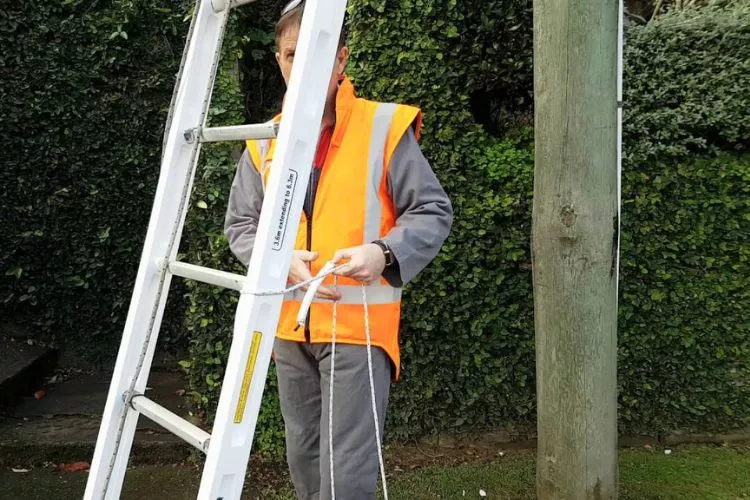
Additionally, follow proper ladder safety guidelines, such as maintaining three points of contact while climbing, using a safety harness when working at significant heights, and securing the ladder at the top and bottom.Remember that while there may not be a specific law prohibiting placing a ladder against a pole, you should always prioritize safety and follow any applicable guidelines or regulations, such as those set forth by the Occupational Safety and Health Administration (OSHA).
What are the OSHA requirements for securing ladders?
The Occupational Safety and Health Administration (OSHA) has specific requirements for securing ladders to prevent accidents and injuries in the workplace.
According to OSHA regulations, ladders must be secured to prevent accidental movement and placed on a stable and level surface. Ladders must also be secured at the top and bottom to prevent slipping or falling.
OSHA also requires that ladders be inspected regularly for any defects or damage that could compromise their safety. It is important to follow these regulations to ensure the safety of workers who use ladders in the workplace.
Some key OSHA requirements for ladder safety include:
- Ladders should be capable of supporting the necessary loads without failure.
- Ladders should be placed on a stable and level surface to prevent accidental movement.
- Ladders must be secured at the top and bottom to prevent slipping or falling.
- Ladders should be inspected regularly for any defects or damage that could compromise their safety.
Conclusion:
In conclusion, securing a ladder to a flagpole is crucial for ensuring safety while performing maintenance or replacing flags.
You can minimize the risk of accidents and injuries by selecting the appropriate ladder, placing it on a stable surface, and following OSHA regulations and safety guidelines.
Always prioritize safety, maintain three points of contact while climbing, and use proper equipment to secure the ladder to the flagpole, ensuring a successful and safe experience.

